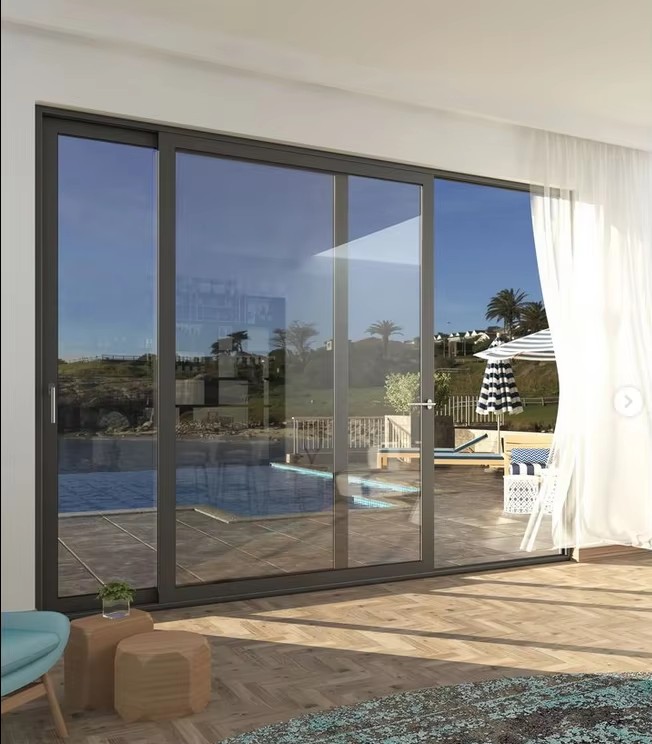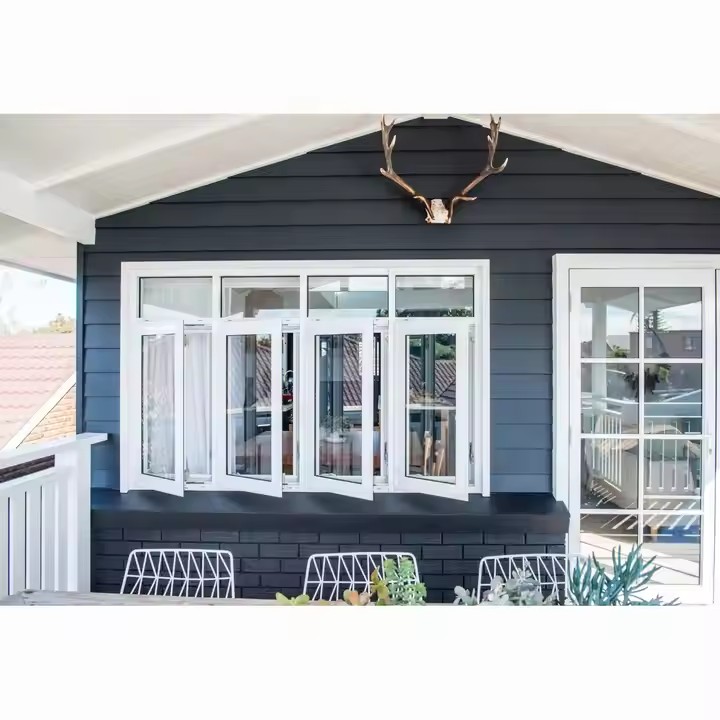- Metal Materials: Core Choice for Corrosion Resistance and Structural Strength
Metal materials are among the most widely used options for coastal curtain walls in Australia due to their high strength, ductility, and machinability. However, the key challenge lies in salt spray corrosion — the chloride ions in coastal air can accelerate the oxidation of ordinary steel and aluminum. Therefore, corrosion resistance must be enhanced through alloy optimization or surface treatment. Coastal environments have high salinity, so corrosion prevention is critical.
(1) 316L Stainless Steel: The “Corrosion-Resistant Benchmark” for High-Salt Environments
316L stainless steel is an upgraded version of standard 304 stainless steel. With 2–3% molybdenum added, its chloride-ion corrosion resistance is 5–10 times greater than 304, making it highly suitable for Australia’s coastal regions, especially the high-salt areas of Western Australia (Perth) and Queensland (Gold Coast). The use of stainless steel should be carefully matched to the environment, as not all conditions are equally suitable.
Performance advantages: Tensile strength ≥480 MPa, yield strength ≥170 MPa, capable of withstanding Category 12 coastal cyclones (approx. 0.7 kPa wind pressure). The surface can be brushed, mirror-polished, or coated with fluorocarbon paint, achieving both strength and aesthetics. Service life exceeds 50 years with minimal maintenance.

Typical applications: Curtain wall keels, supporting frames, operable hardware, and exterior decorative trims. For example, the Sydney Opera House’s metallic decorative elements and the façade structure of the “Palazzo Versace” hotel on the Gold Coast both use 316L stainless steel, which remains rust-free after over 20 years of exposure to sea winds.
Standards: Must comply with AS/NZS 1528.1, which requires a molybdenum content of ≥2% for coastal curtain wall stainless steel and a surface roughness Ra ≤ 0.8 μm to reduce chloride attachment.
(2) Fluorocarbon-Coated Aluminum Alloy: Balancing Lightness and Weather Resistance
Aluminum alloys have a density of only 2.7 g/cm³ (about one-third that of steel), effectively reducing curtain wall weight and structural load. However, pure aluminum is prone to pitting corrosion in salt spray environments, so PVDF (fluorocarbon) coating is required for protection.
Performance advantages: Typically made from 6063-T5/T6 aluminum alloy with tensile strength ≥215 MPa, sufficient for curtain wall load-bearing. The fluorocarbon coating uses a “three-coat, two-bake” process with a thickness ≥40 μm. It achieves UV aging resistance Level 7 (ISO 105-B02, 5000 hours exposure with no fading) and passes the ASTM B117 salt spray test (1000 hours, no corrosion or coating peel).
Typical applications: Curtain wall mullions, transoms, unitized façade panels, and operable frames. For example, Melbourne’s Eureka Tower uses PVDF-coated aluminum façade panels that have maintained structural and aesthetic integrity after 15 years facing the high winds and salt air of Port Phillip Bay.
Precautions: Avoid coating damage. During coastal installation, ensure proper sealing — joints should use weather-resistant silicone structural sealant to prevent salt mist penetration.
- Glass Materials: Dual Requirements of Light Transmission and Impact Resistance
Glass is the visual centerpiece of curtain walls. Coastal glass façades in Australia must not only be strong and impact-resistant, but also withstand intense UV radiation, prevent water infiltration from heavy rain, and resist debris impact during storms.
(1) Ultra-Clear Tempered Laminated Glass: First Choice for Strength and Safety
While ordinary tempered glass offers 5–10 times the strength of annealed glass, it shatters into sharp fragments that can pose safety risks. Ultra-clear tempered laminated glass, made of two tempered sheets bonded with a PVB (polyvinyl butyral) interlayer, solves this problem.
Performance advantages: Ultra-clear glass provides ≥91.5% light transmittance while limiting UV transmission to ≤1.5%. Wind pressure resistance meets AS/NZS 2208 Level 5 (up to 1.2 kPa, equivalent to a Category 14 cyclone). Even when broken, the PVB interlayer holds fragments in place, preventing falling debris and maintaining residual strength.

Typical applications: Transparent curtain wall panels, viewing decks, and floor-to-ceiling windows in coastal buildings. For instance, the South Bank Parklands waterfront pavilion in Brisbane uses 8 mm + 1.52 PVB + 8 mm ultra-clear laminated tempered glass, which withstood Typhoon “Yasi” (Category 12) in 2022 without breakage, showing only minor surface scratches.
Upgraded option: Apply a hydrophobic nano-coating (e.g., SiO₂ layer) to reduce salt deposits and extend cleaning intervals.
(2) Ceramic-Frit Tempered Glass: Combining Functionality and Durability
Ceramic-frit tempered glass features inorganic frit patterns fired at 620–640 °C, forming a hard, corrosion-resistant surface suitable for shaded or decorative façade zones.
Performance advantages: Frit surface hardness reaches Mohs 7 (similar to quartz), with excellent scratch resistance. It passes 2000-hour ASTM B117 salt spray tests (no peeling or discoloration). Inorganic frits contain no VOCs, complying with environmental standard AS/NZS 4349.1.
Typical applications: Podium façades, equipment enclosures, and sun-shading louvers. For example, the Elizabeth Quay commercial complex in Perth uses ceramic-frit tempered glass for sun-shading panels — effectively blocking intense afternoon sunlight and resisting Swan River salt exposure. After eight years, the frit surfaces remain color-stable.
- Composite Materials: Emerging “Weather-Resistant + Lightweight” Solutions
With advances in material science, composite panels are increasingly used in Australian coastal curtain walls. Their main advantages are high specific strength (strength-to-weight ratio superior to metals) and complete corrosion immunity (no rust-prone metallic substrate). Such composite materials require advanced manufacturing technologies to achieve optimal performance.

